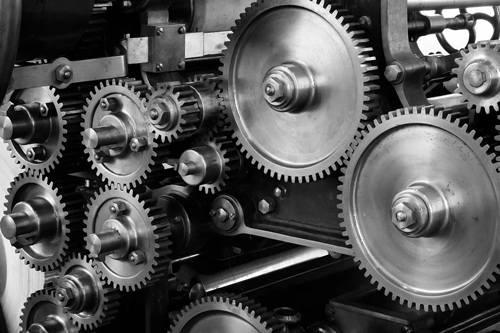
If you ask anyone who works in a machinery factory, what is the definition of a "multitasking device"? You may get as many answers as a multitasking platform.
Of course, from the perspective of machining, the concept of multitasking is not new. Single and multi-spindle automatic lathes and rotary transfer machines have been around for a long time, and they can do more turning work. Then, it is the transition to CNC.
Swiss-type technology is constantly improving. In addition to milling, drilling, turning, thread rotation, etc., some types of equipment also have a five-axis B-axis spindle. A new product of a company now provides an automatic tool change function for its B-axis spindle. Other modules can even be laser cut and welded. Now, their applications in traditional workplaces have become more common, not just in screw machinery factories, but also in the production of small diameter bar parts. However, when the torque and power of the B-axis spindle can be matched with the special milling machine and automatic tool changer, the B-axis spindle is added to the platform of the turning center, which is a huge improvement for workshops that run larger parts . Like some "rotary grinders" rarely perform rotation, just because the parts may be made of cylindrical rods, but that does not mean that they cannot become prismatic once processed. It seems that the boundaries between lathes and milling machines are becoming increasingly blurred. In addition, some rolling mill models provided by many companies can be equipped with laser cladding devices for maintenance work or to add small functions to large parts.
As computer control has been added to multi-axis and rotary grinding equipment, the new trend is to introduce flexibility to these multi-tasking, high-production processing equipment. The purpose of this is to enable equipment capable of turning, milling, drilling, gear hobbing, polygon cutting, etc., to more easily turn to the production of other parts. Quickly changing tooling is a technology that makes the equipment shine when the batch is reduced. Over the years, CAD/CAM technology has also made great improvements in supporting various multi-task machine platforms. Some programming and control software uses artificial intelligence to "build" intelligence into programs. One of the key parts is the concept of creating a digital twin of the machine, that is, creating a digital copy of the entire machining operation in a virtual environment. This technology not only guarantees offline verification procedures, eliminates the possibility of collapse of complex, multitasking machines, but also optimizes tool paths and reduces cycle time. The current challenge is to develop post-processors for complex devices, because programmers hardly need additional G-code editing.
Therefore, in addition to the use of the tool room, almost all production equipment designed around the turning platform has been purchased with some additional processing capabilities, at least live tools. Perhaps, the days of transferring semi-finished products from lathes to factories and then to other processing equipment to complete parts will soon be a thing of the past.
















 RCCN WeChat QrCode
RCCN WeChat QrCode Mobile WebSite
Mobile WebSite